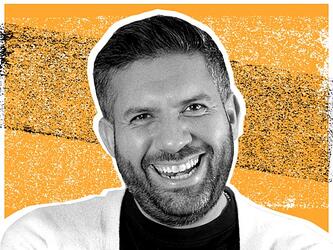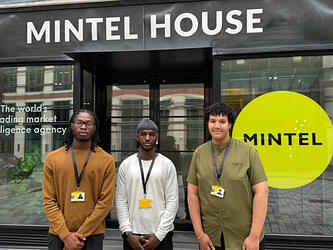Article Not Available
Can you start by introducing us to the team and its roles and responsibilities?
Our team drives financial and customer growth for Sainsbury’s by inspiring colleagues across the business with customer-founded insights that evolve our business to the best it can be for our customers. The team is formed of four sub-teams who partner key areas of our business:
- Marketing insight informs brand development and planning, communications, customer loyalty and Nectar, Sainsbury’s own brand, sponsorship and corporate responsibility.
- Trading and channels insight delivers customer performance insights to drive trading decisions through our food and non-food business units, and our online and convenience channels.
- Business performance insight provides ongoing insights on drivers of our and our competitors’ performance, market trends, store development and experience, and leads the Sainsbury’s annual brand review.
- Data, tools and segmentation lays the foundations for actionable customer insight and communications by ensuring data quality and governance, partnering with Nectar-owner Aimia to develop our bespoke insight tools and creating our customer models and segmentations.
How many of you are there in total in the customer insight team?
There are 21 people within the team, which shows the substantial emphasis on customer insight at Sainsbury’s. The size of the team also reflects the breadth of work and the range of challenges we face as we mine the vast amount of data available to us.
Alex Owens has recently joined as the new head of insight so we’re looking forward to an injection of fresh ideas.
Where does the insight team sit in relation to the rest of the business?
We sit within the marketing team in the group commercial division. We work across the business in all areas such as marketing and property to help shape the business, ensuring the customer’s voice is heard.
What does a typical day in the life of the customer insight team look like?
Every day is different – we are a hands-on team so we might be conducting some groups or depths in stores, attending groups, analysing Nectar data or working closely with our internal stakeholders and agencies to ensure that we are generating new insight that will help move the business forward. The role is a balancing act between managing long- and short-term priorites.
Do you have a guiding philosophy as a team about what the role of the customer insight function should be and how it should engage with the rest of the organisation?
Our guiding philosophy is to reveal opportunities and inspire. We believe that every project should meet this philosophy and that is how we add value to the business. Our stakeholders then are very engaged with using customer insights to help them make the right decisions.
What about agencies? How do you see your relationships with external suppliers and how do you make sure you get the best out of them?
We invest in close, long-standing relationships with our agency partners which promotes a more efficient, effective and enjoyable working environment, and which breeds a truly mutually beneficial relationship. Our agency teams are trusted and know our brand and our business. We like them to challenge us as they can bring perspectives from the work they undertake in other sectors.
Our approach to building these strong, long-term and strategic agency relationships is made possible by our ‘buddy’ scheme which facilitates ongoing communication above and beyond project management, provides a channel for two-way feedback and continuous improvement and encourages the sharing of ideas and emerging research approaches.
By actively sharing business priorities and performance with our agency partners, we work as a more integrated team where everyone actively contributes to identifying and informing future opportunities.
Are there any bad habits that either clients or agencies are guilty of that you’d like to put a stop to, to make sure research delivers what it’s meant to for your internal clients?
Providing insight that leads to foresight (that’s both commercially viable and operationally feasible) is key to ensuring that senior colleagues take the findings on board. To that end:
- Feedback should be concise so that it’s easily digestible. Often agencies try and put everything into a PowerPoint deck so that you can end up with 80 slides, meaning the audience is distracted from the key takeouts.
- Feedback should be commercially thought through. Too often we see recommendations like “You need to do more promotions” or “You need to build a store with the full range” (without understanding that it’s a small store). Recommendations need to be commercially viable to be credible.
- Feedback needs to help prioritise. Sometimes there are a number of recommendations, so if we could only change one or two things which ones should we focus on for the biggest win?
We also need to focus on triangulation of data to ensure that we make the most of all the data we have. This means we are using our resources wisely as we are only conducting projects to fill true gaps in our knowledge.
In winning the award, the judging panel said that you had “put research firmly in the collective mind of the boardroom”. How have you gone about achieving that?
We are truly focused on embedding insight within the business and the key business planning processes. We are led at director-level and have operating-board-level engagement. We inform high-level business planning through an annual customer insight brand review, regular contributions to Sainsbury’s operating and trading boards and a diverse range of business steering groups and stakeholder teams.
As well as communicating our recommendations through these regular presentations, a key part of our success is driven by our ongoing informal communication with our key stakeholders. Developing insight portals to share everyday information has also freed up more time to allow face-to-face communication and discussion.
Our team structure allows us to keep close to priorities around the business and a fortnightly insight bulletin captures the latest customer mood and enables us to re-enforce key messages. We have transformed the team over the previous three years from one which reacts to business needs to one which is truly integrated (and which proactively contributes) to business decision making.
- Click here to find out how Diageo puts research at the heart of global business decisions

We hope you enjoyed this article.
Research Live is published by MRS.
The Market Research Society (MRS) exists to promote and protect the research sector, showcasing how research delivers impact for businesses and government.
Members of MRS enjoy many benefits including tailoured policy guidance, discounts on training and conferences, and access to member-only content.
For example, there's an archive of winning case studies from over a decade of MRS Awards.
Find out more about the benefits of joining MRS here.










0 Comments